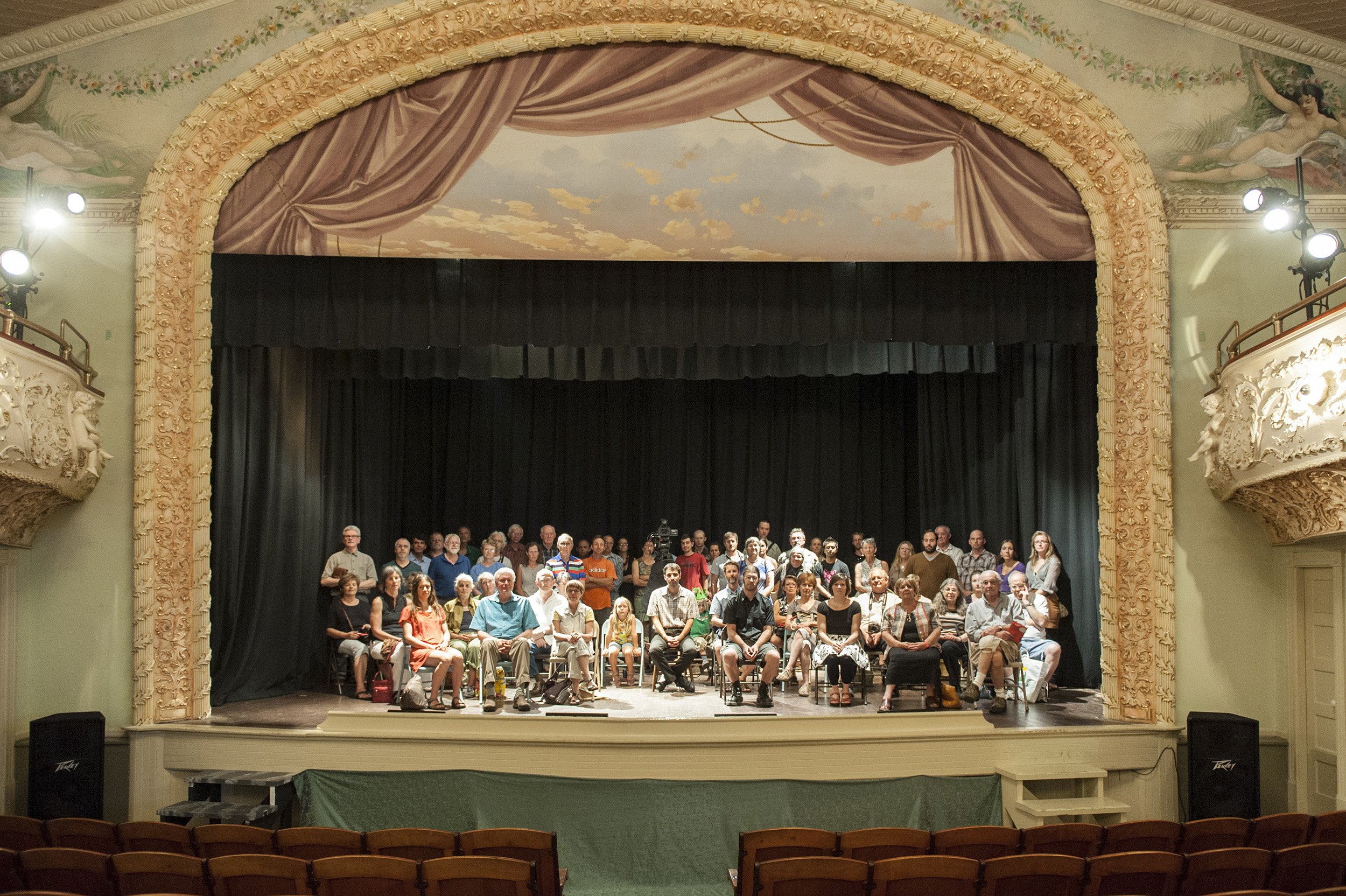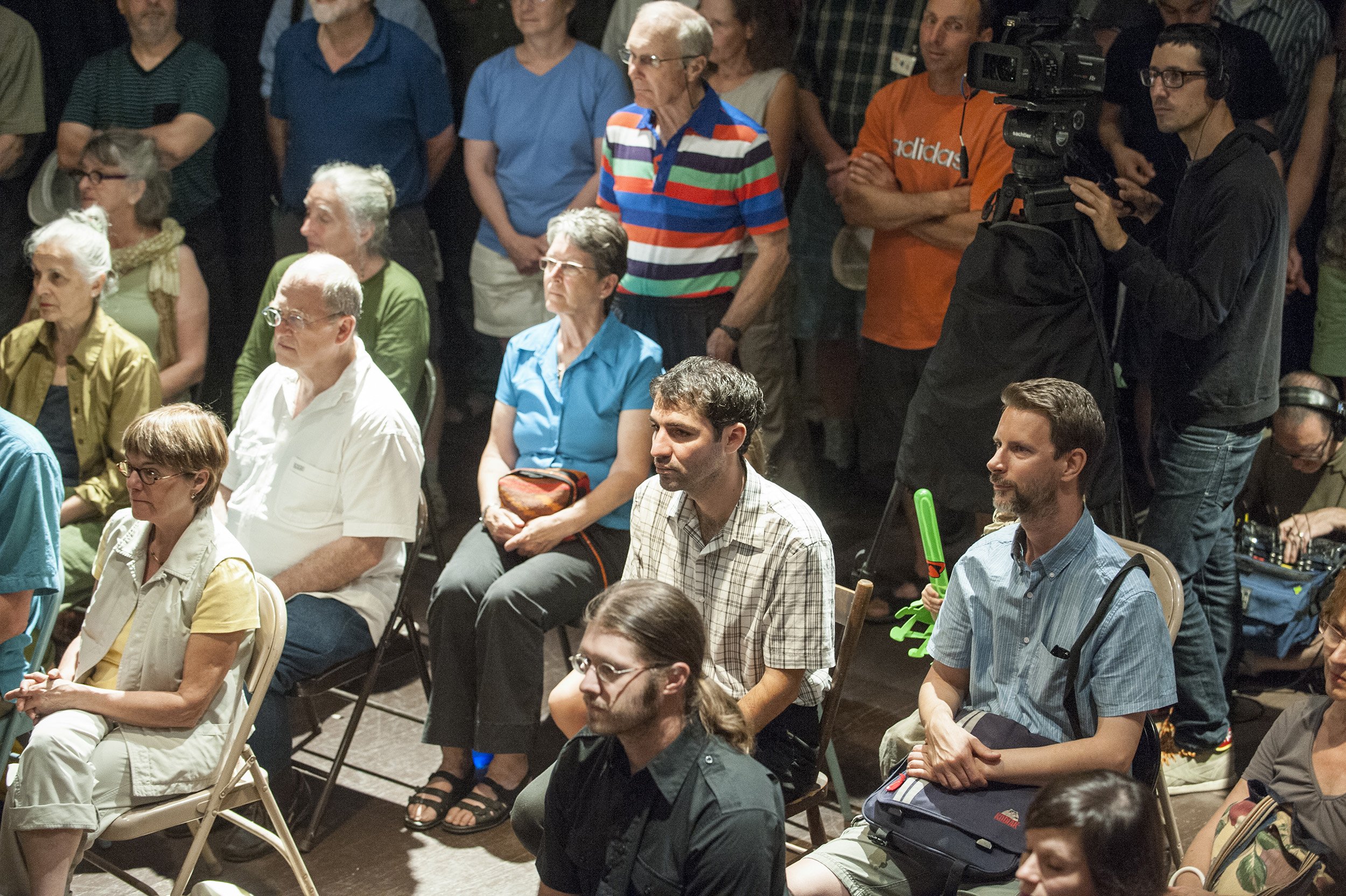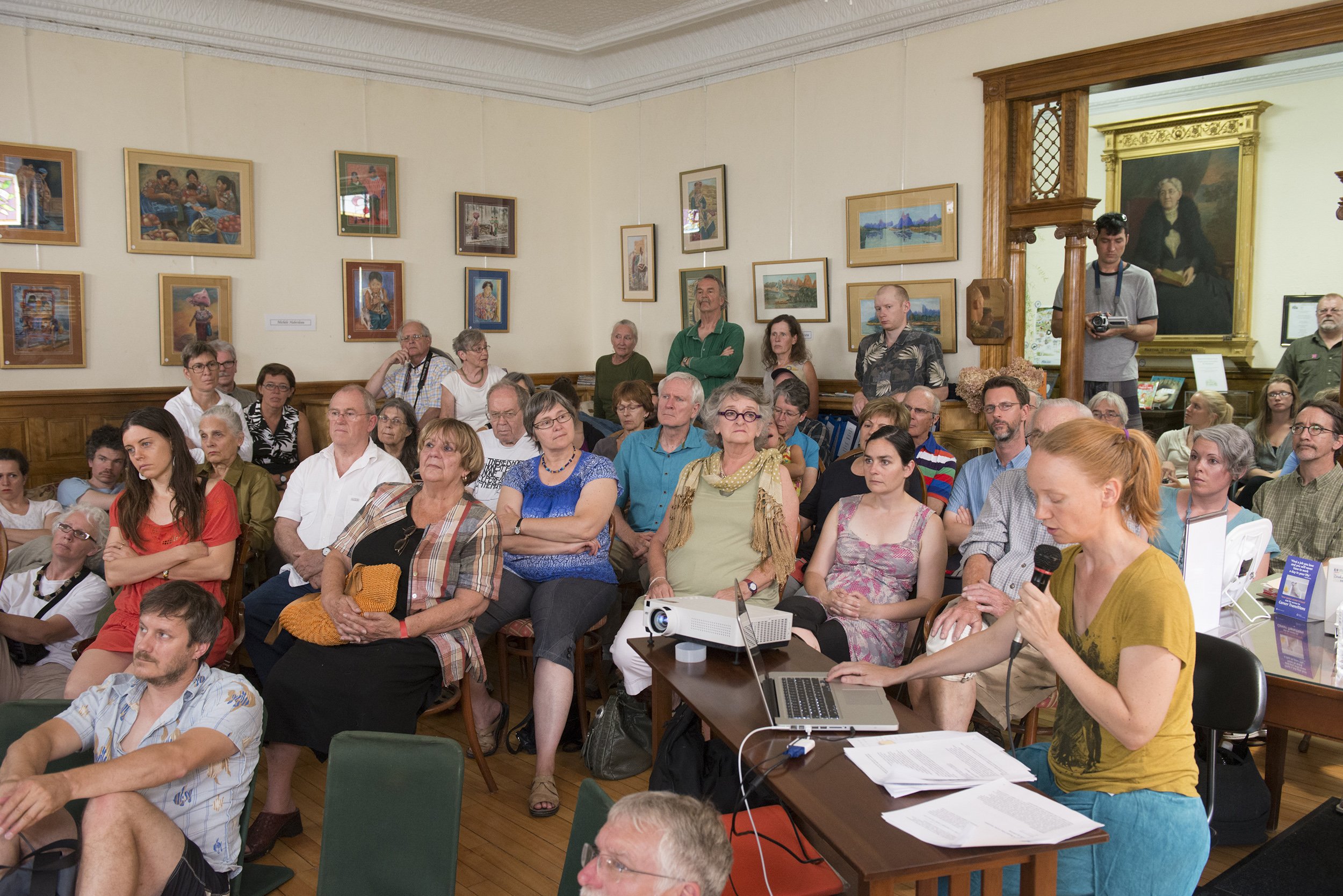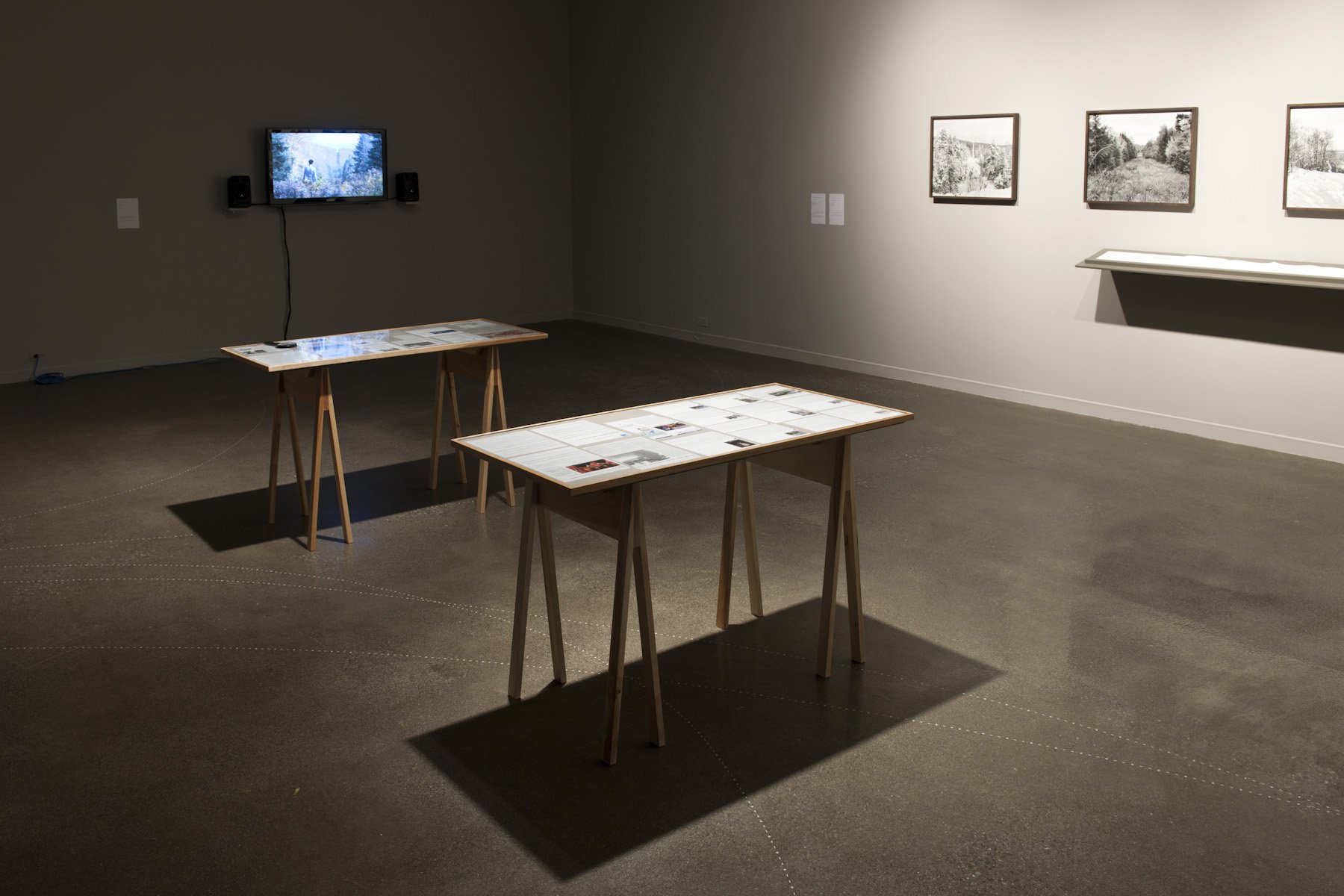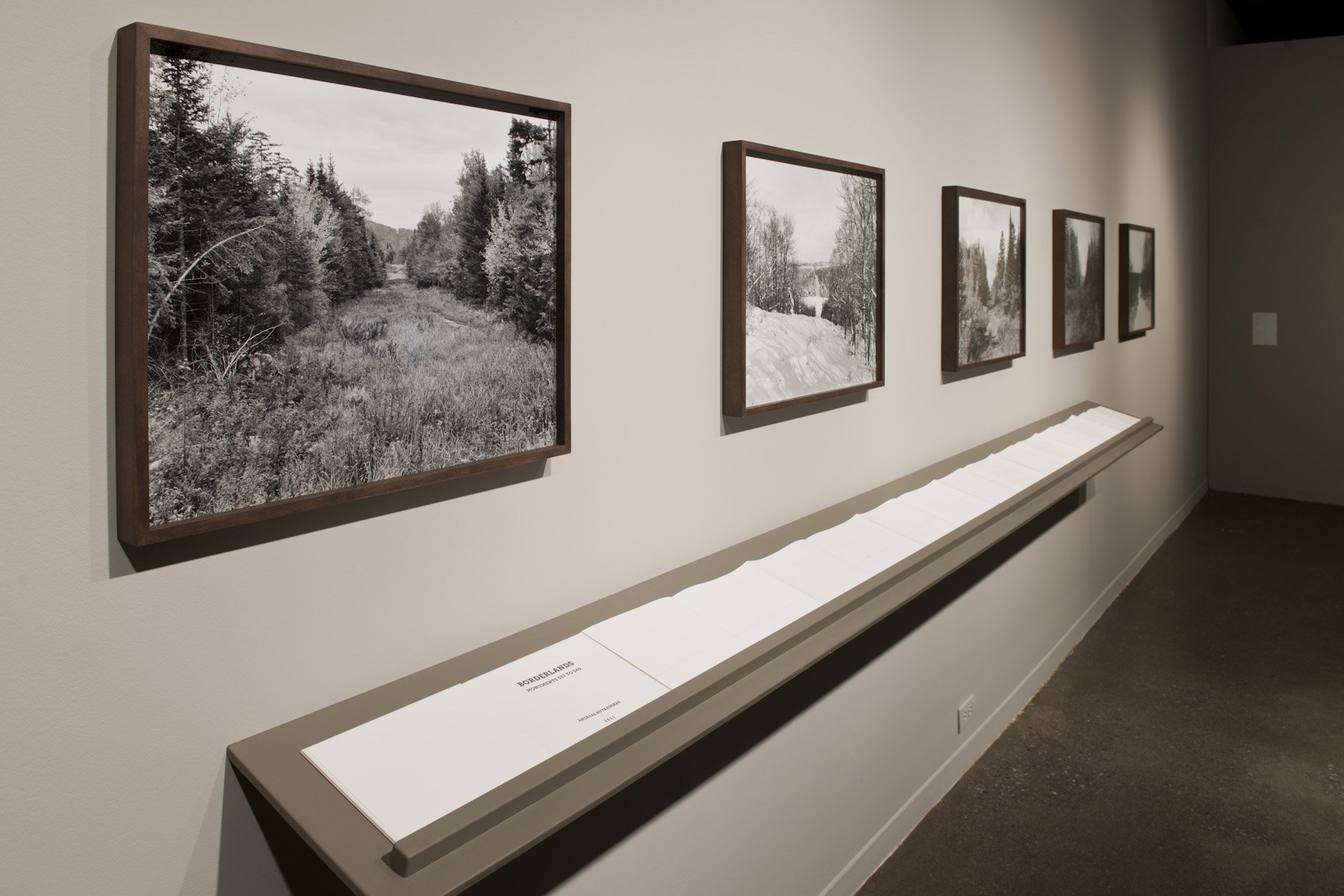
Stanstead Project, or How to Cross the Border
In 2012, the event took place as artists Raphaëlle de Groot and Althea Thauberger produce context-oriented works articulated around Stanstead and its social, cultural, historical, and political contexts. The exploration they both conducted revealed a network forged through their various encounters and the stories they uncovered. De Groot, continuing her then ongoing project Le poids des objets, toured the region, looking for objects and stories inescapably tied to the area. During her encounters, she gradually built up an understanding of the territory and its inhabitants, discovering traits and characteristics that she imparted during the event in the form of illustrated storytelling, at the crossroads of the real and the imaginary.
Althea Thauberger’s work focuses on the history of the Waban-Aki First Nations people who occupied an immense territory covering northern New England up to the southern edge of the Maritimes. The artist created a participatory performance based on the encounter of two members of the Waban-Aki Nation (from Odanak, QC and Newport, VT) in the Haskell Opera House. In doing so, the work focuses on the Abenaki language and its translation process from English and French.
Curatorial project presented by the Foreman Art Gallery of Bishop’s University, Sherbrooke and Stanstead, Quebec, Canada, 2011 and 2012
Project Stanstead, or How to Cross the Border revolves around the geopolitical notion of border. In the last few months, the citizens of Stanstead—the border town in the Eastern Townships that neighbours Derby Line, Vermont—have seen a heightening in border security, manifest in the construction of fences and a growing number of customs officers and arrests. In Stanstead, people have routinely crossed the border for generations going back to the late 18th century, some with family members on both sides of it.
This first part of the project (2011) preparatory to the case of Stanstead and Derby Line, broaches the general question of the world’s boundaries and the nature of the territories they circumscribe. Ursula Biemann’s Performing the Border (1999) and Europlex (2003) examine the legitimacy of the borders that neo-capitalism creates between rich nations and poor ones, between men and women. Green Border (1993) which Christian Philipp Müller presented at the Venice of Biennale, deals in part with Austria’s historical boundaries, and his more recent Burning Love (2010) explores the cloth-weaving traditions of a mountain community. Andreas Rutkauskas drew from the surroundings of Stanstead to produce photographs, video, and travel logs that reveal the arbitrary nature of the linear division of Canadian and US territory.
